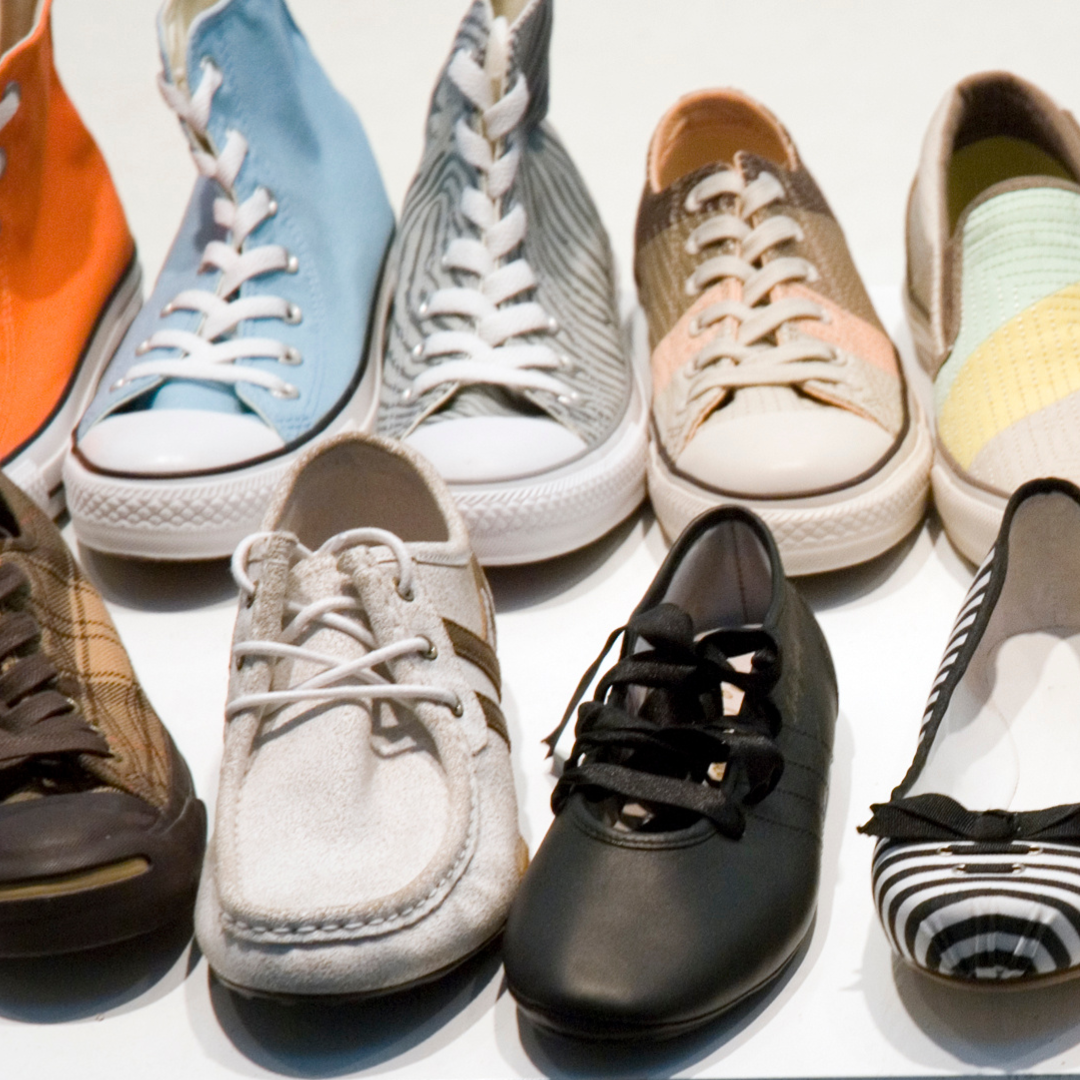When it comes to plantar fascia pain, your shoes can either help you recover or keep you stuck in a cycle of pain. And while many people focus on stretches and ice, they often overlook one of the simplest but most important factors: what’s under your feet all day.
Let’s start with a quick note: Plantar fasciitis is the most commonly used term for heel pain, but it’s not the most accurate. The “-itis” implies inflammation, but in most chronic cases, the issue is fascia overload and poor tissue health. That’s why clinicians often use terms like plantar fascia pain or plantar fasciopathy instead.
We’ll use plantar fasciitis here for search clarity — but just know we’re talking about more than inflammation.
Now, let’s talk shoes.
The wrong footwear can make things worse
Poor footwear choices can lead to increased strain on the plantar fascia, reduced shock absorption, and lack of support — all of which delay recovery.
Here are five types of shoes that can contribute to ongoing heel pain:
1. Flat, unsupportive shoes
Think thin-soled plimsolls, ballet flats, slip-ons and fashion trainers rather than sports trainers. These shoes offer no arch support and very little heel protection.
The result? More strain through the plantar fascia every time you take a step.
2. Worn-out trainers
Even the best running shoes don’t last forever. When the sole compresses and the heel support wears down, the shoe can no longer protect your foot — even if it still “looks fine.”
A general rule: running shoes lose their support after about 500 miles or 6–12 months of regular use.
TOP TIPS – But I’m not one for overspending in reality I find I can always get longer out of trainers then advised – but it is something to consider. When you find a trainer that suits your foot stick with them. I’m a fan of asics and new balance for my feet and they don’t break the bank.
3. Barefoot-style or minimalist shoes
These are designed to let your foot “move naturally,” but if you have plantar fascia pain, your foot needs support — not freedom.
Without the right strength and resilience, going minimalist too soon can overload the tissue even more.
For more information take a look at this blog – Can Barefoot Shoes Help Plantar Fascia Pain?.
4. Old slippers or unsupportive house shoes
Walking barefoot on hard floors — even just at home — can aggravate pain. Slippers that are soft but have zero structure won’t help much either.
Your plantar fascia is working just as hard at home as it is outside. Support matters indoors, too.
5. Flimsy sandals or flip-flops
That flat, bendy sole does little to support your heel or arch. Plus, gripping with your toes to keep them on can change the way you walk.
Choose sandals with a contoured footbed and heel cushioning instead.
6. Wellington Boots
These tend to be completely flat and inorder to get your foot in they have to be loose around your foot – giving no support.
Walking boots are a better option or you could try an innersole which may improve things.

Footwear is only a small part of the picture!
What to wear instead
Look for footwear with:
- A firm, supportive sole
- Built-in medial arch support
- Slight heel lift (not high heels — just a bit of elevation)
- Good cushioning through the heel
TOP TIP – No need to buy new shoes inner soles can help reduce load on the plantar fascia while the tissue recovers. These don’t have to be custom — some over-the-counter ones work well.
Real Story: “I was doing everything right — but still sore every morning.”
Nina was doing lots of things to try and settle her pain less walking, ice, and exercises — but her foot pain was still bad. She would find it got better when she rested but as soon as she increased her activity again her pain returned. So she came to see me. When we looked at her shoes, they were flat, soft slip-ons that gave no support. At home she walked around in bare feet.
I gave her some innersoles that supported her medial arch which she put into some of her existing shoes that were more structured and supportive, and within days her morning pain was easing.
“I honestly didn’t realise my shoes were working against me,” she said.
“Changing them made more difference than any stretch I’d done.”
Nina also had very poor lower limb biomechanics that were increasing load through her foot. We addressed this with exercise to ensure the problem does not return. I caught up with her 2 months later she is back to her normal activity and pain free.
TOP TIP – As part of the Plantar Fascia Pain Program. We assess your foot position and your biomechanics and then give you advice on the best way to correct it. This is just a small part of the program which has everything you need to completely resolve this annoying problem.
Final thoughts
Recovering from plantar fascia pain often takes more than just stretching or resting. A targeted treatment program is key to resolve this tricky problem. However, the choices you make every day — especially what you wear on your feet — can either support healing or hold you back.
Supportive, cushioned footwear with proper structure can dramatically reduce strain and give your body the conditions it needs to heal.
If you’ve been doing all the “right” things and still not getting better, take a closer look at your shoes. It might be the simple shift you’ve been missing.
Small changes can lead to big results — and it often starts from the ground up.
Take care, Helen
Helen Manders BSc (Hons) MCSP HCPC
Chartered Physiotherapist
Treating Plantar Fascia Pain Since 2001




